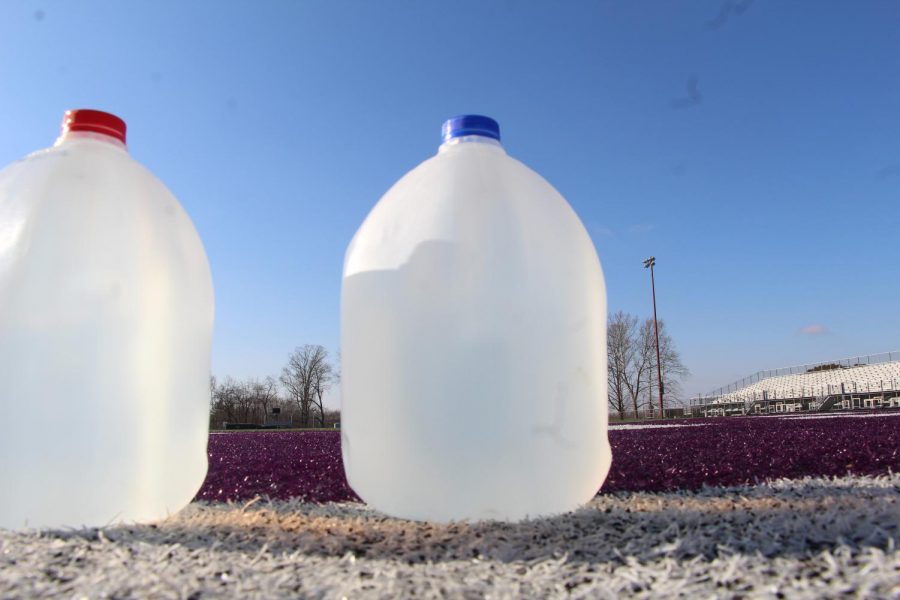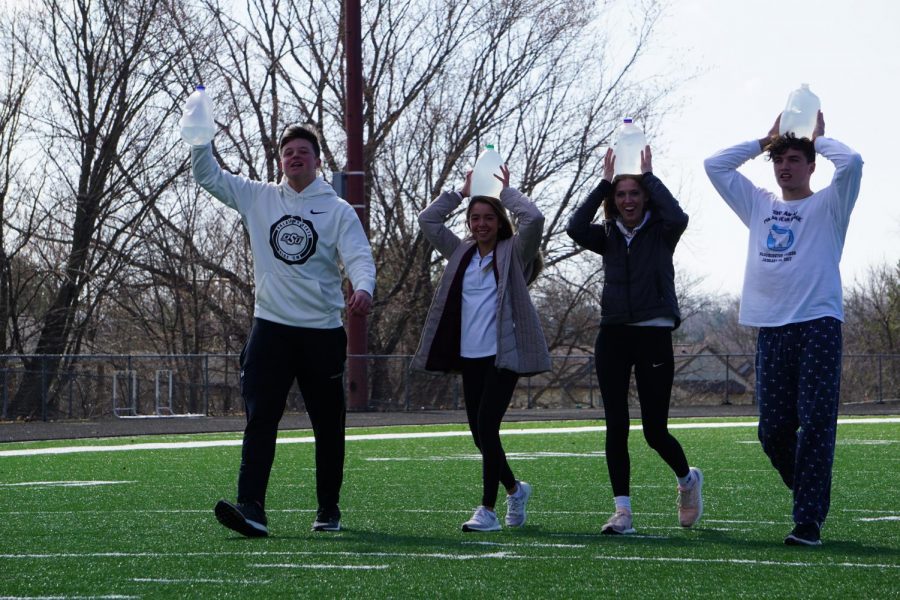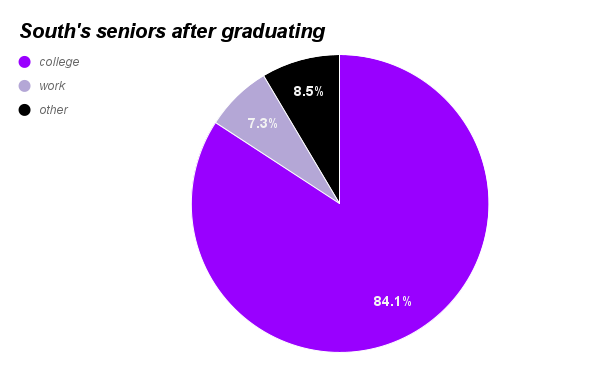If about 60 percent of the human body is made up of water, then why does 20 percent of the world’s population have to put their blood, sweat and tears into accessing just small amounts of it?
World Water Day is a United Nations (UN) day of action that science teacher, Amanda Figolah, decided to introduce to her AP Environmental Science (APES) and members of South’s student body.
This day is meant to bring awareness to problems involving water security worldwide, primarily in developing countries.
“Water security could include poor water quality, issues of quantity or scarcity and issues about equity as it relates to obtaining water,” Figolah said. “For example, in most developing countries with water scarcity or droughts, it’s the women who carry the water, so women don’t go to school.”
The idea to bring this movement to our school began with a colleague of Figolah bringing it to her attention. The idea was to get her students to do an environmental cleanup on that day, but Figolah wanted to take it a step further.
“When I read about [World Water Day’s] objectives, it seemed more appropriate for us to think about social and health issues as they relate to environmental issues regarding water,” Figolah said. “Because my husband Tom had gone to Sierra Leone and saw water carriers and because I, out of curiosity, began reading a book called ‘A Long Walk to Water,’ I felt inspired to share with students.”
The event itself will take place on Friday, March 22. Students will be given a random profile of an actual water carrier from somewhere in the world that they will replicate as a simulation on a smaller scale.
“For example, in Sudan, maybe a woman carries water 9 kilometers, so on our scale, the student would do 9 lengths of the football field carrying a certain volume of water, say three gallons,” Figolah said.
Students from her APES classes and her freshman biology class will be participating, as well as a handful of volunteer classes. If this year proves to be successful, she would like to expand it to reach more students and get more people involved.
“The profiles are personal stories of people around the world, highlighting specific countries. They are real stories about real people and how far they’ve traveled, how much water they need for their family and how long it takes them to travel,” Figolah said.
In addition to the event itself, the team of students who helped to plan it created an Instagram (@worldwaterday2019) where they promoted their donation page through The Water Project as a fundraiser to help build a well in a water insecure area. You can donate money here through the end of the month.
To get a scope of how each country differs with this issue and to further bring awareness to the topic of water insecurity to those who won’t attend the event, students have shared information on their profiles.
Junior Isabella Jeskewich chose the story of a Kenyan woman who walks 13 miles twice a day for water and has done so since she was 12-years-old.
“I started researching different people, and I thought her story was very inspiring because she’s done it for so long. She also got into contact with this organization that helps build wells for people and helped build a well in her community,” Jeskewich said.
Senior Tiffany Luong did one of her profiles based off of a woman from Nepal who walks approximately six miles to get water and spends about four hours making her trek.
“I tried to pick countries that are not located in Africa because, when people think about water shortages, mostly Africa comes to mind,” Luong said.
Junior Hannah Hillers completed her profile on a five-year-old girl from Sudan who walks four miles twice a day with a small kettle.
“The water wasn’t even clean, so she’d get sick; and she also couldn’t go to school,” Hillers said.
Junior Emma Hickman also chose an intriguing story about a girl from Tanzania who travels one mile to get water 45 times a day. She said that during the dry season she has to walk three or four miles just to get clean water, and sometimes, it’s not even clean.
“I thought that was very impactful to think about how she had to walk that far just to get water that wasn’t even clean, since that’s the only water that was available,” Hickman said.
According to the UN, water scarcity affects around 1.2 billion people around the world.
“I personally think that water quality, water protection, access to water and any other issue that you can imagine regarding water is probably the most important environmental issue facing us because it would directly affect people,” Figolah said. “For example, climate change is an environmental issue that’s important to all of us globally; however, not everybody feels climate change. If we run out of water for even a day, or if water is of poor quality, there are consequences immediately.”
“I hope students take from this event a perspective that allows them to appreciate the resources they have here,” Figolah said. “I hope that they leave this with an international or global viewpoint, understanding that people all over the world experience life in a very different way than we do.”


